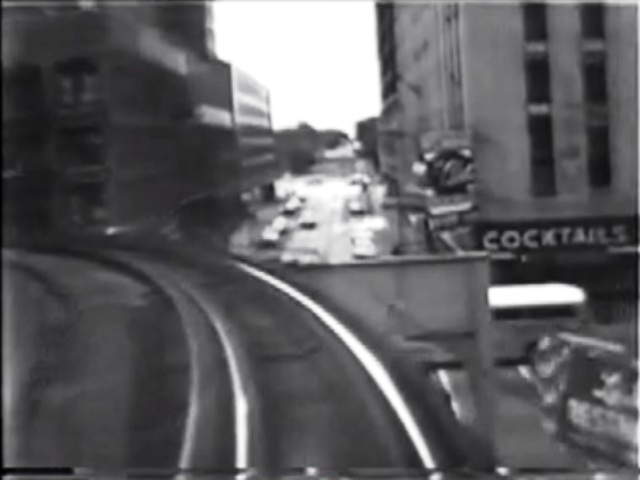Video: Take A Ride On CTA's Lake-Dan Ryan Line In The 1970s
By Chuck Sudo in News on Aug 27, 2013 2:30PM
Here's a little bit of Chicago public transit history for you on this Tuesday morning. The three videos below capture, in black and white, a trip on CTA's West-South Line in the 1970s—an uninterrupted train from 95th Street on the Dan Ryan South branch, to Harlem Avenue in Forest Park.
The route came into existence Sept. 28, 1969 connecting what is now known as the Green and Red Lines via the South branch along the Dan Ryan expressway, the Alley "L" south of Roosevelt Road, the Loop and the Green Line tracks. The line stayed in operation until February 1993, when CTA switched to its current color-coded rail line system. But ridership along the line declined steadily for years before that, as population shifts in Chicago saw more riders take the Howard-Englewood/Jackson Park line (which includes most of the current Red Line route).
The West-South line was a high-speed route and it was serviced by what was then state of the art 2200, 2400 and 2600-series rail cars. A West-South line train was involved in the worst train accident in CTA history. From the invaluable Chicago-L.org:
At approximately 5:25pm, one such Evanston Express was loading and unloading passengers at the State/Lake station. A Ravenswood train was following and had stopped on the track behind the Evanston Express, waiting for the Evanston to clear the station so that it could pull in. At the same time, an Oak Park-bound Lake-Dan Ryan train was boarding and alighting riders at the Randolph/Wabash station, two blocks away and around the bend from State/Lake.The motorman of the Lake-Dan Ryan - one Stephan A. Martin, age 34, a motorman since 1969 - completed his station duties and pulled his train out of Randolph/Wabash. Somehow, it escaped his attention that there was a train stopped on the tracks ahead, although this information was being relayed to him both visually and audibly by the new automatic cab signaling system installed in his motor cab. He proceeded against the restrictive signal at a speed of less than 15mph (thus staying under signal control), around the Lake & Wabash curve, into collision with the stopped Ravenswood train at 5:27pm.
Making matters worse, Martin continued to apply motor power, even after the collision! The 8-car Lake-Dan Ryan, with 2,500 kw of power behind it, pushed against the immovable Ravenswood train. This application of power, coupled with the fact that the train was on a 100 ft. radius elevated curve, caused the tubular coupling bar between the first and second cars to buckle, pushing the rear of the first car and the front of the second into the air. The first three cars were lifted sufficiently upwards and outwards that they jackknifed and crashed to the street below, the fourth car (still coupled to the rest of the train) hanging precariously between the elevated structure and the street below. The last four cars stayed on the tracks, still berthed at the Randolph/Wabash station platform.
Barbara Coats, 35, a passenger in the first car of the Lake-Dan Ryan train, said after the accident, "It wasn't a big impact, but it was like we hit something and couldn't go any farther. After the front wheel went off, I was just praying we couldn't fall off - but we did."
Ambulances and police rushed to the scene in minutes, the ambulances lining up on Lake Street waiting to move the dead and injured. Fire Commissioner Robert Quinn called an immediate extra alarm to hurry needed man power to the intersection, which was blocked by the wreckage. Police and firemen worked for two hours to free persons trapped in the wreckage, chopping holes in the tops of the elevated cars to extricate victims.
Eleven people were killed in the accident and 180 were injured..
Take a look at the videos and sit in amazement at part 1 as the train moves at a high rate of speed—damn near light speed compared to how Red Line trains moved before the current South Branch reconstruction began in May. If Red Line trains move from Chinatown to 95th street anywhere near these speeds, the shutdown will have been worth it.
Part 1: From 95th Street to 35th Street

Harrison and Wabash, back when the "S" curve along that intersection had a more severe angle.
Part 2: From 35th Street To Ashland/Lake
Part 3: Ashland to Harlem